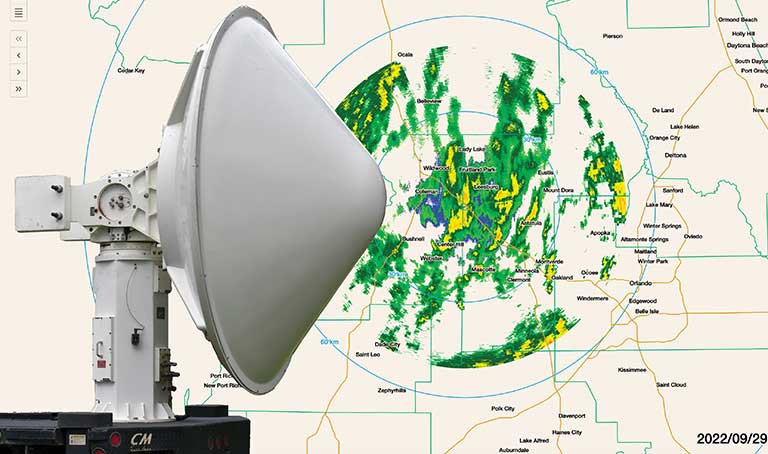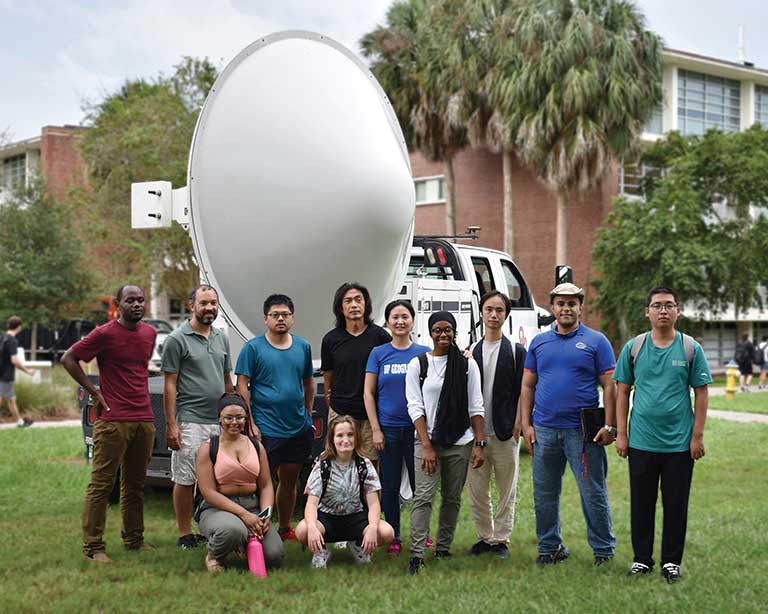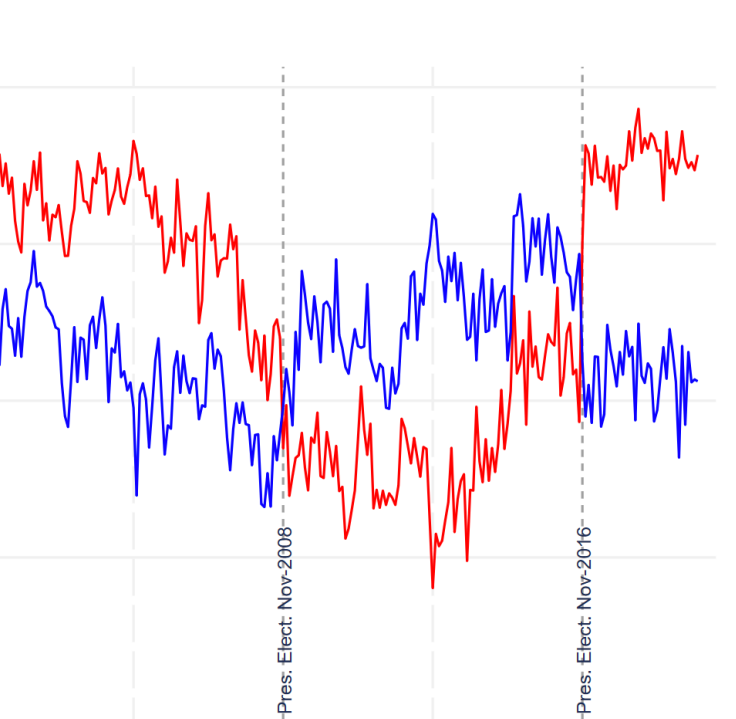
A data set collected during Hurricane Ian’s landfall, viewed on RadarHub. RaXPol's platform, photo by Amey Owen.
In All Kinds of Weather
Meet RaXPol
This imposing piece of machinery is the most sophisticated storm chaser out there. Attached to a heavy-duty Chevrolet Silverado 5500, it’s one of only 18 operational mobile Doppler weather radar units in the world. With a pedestal rotating 360 degrees within two seconds, RaXPol helps unlock the secrets of severe storms through accurate, high-speed data collection. 
The state-of-the-art system — whose name is short for “Rapid X-band Polarimetric Radar” — can usually be found hunting tornadoes out in the Great Plains of the central United States. With funding from the National Science Foundation, the unit took a break from twister-chasing to touch down in Florida for a three-week-long visit, coordinated by YIXIN “BERRY” WEN, assistant professor of geography.
With funding from the National Science Foundation, researchers and students from the University of Oklahoma’s Advanced Radar Research Center (ARRC) and UF’s Department of Geography collaborated to execute field experiments focused on the state’s trademark sea breeze thunderstorms.
Many Floridians don’t realize that their daily deluge of summer storms comes thanks to sea breezes on the opposing Gulf and Atlantic coasts crashing into one another as they move over the peninsular land formation. As the only state affected by such a collision, Florida has special insight to offer scientists taking a closer look at thunderstorm formation.

Unexpectedly, the UF team was also given the chance to deploy RaXPol in Central Florida and collect observations from Hurricane Ian’s landfall. With the roughly 30 hours of data collected, the scientists hope to quantify the precipitation, wind structure and evolution of the storm.
Storms are increasing in severity and frequency as climate shifts drive new patterns. Residents of Florida, as well as many agricultural industries, rely on knowledge of precipitation events and suffer from the inaccuracy of storm predictions. The UF researchers are on a mission to improve forecasting, and ultimately protect property and lives, using RaXPol’s data.

This story appears in the fall 2022 issue of Ytori magazine. Read more from the issue.


